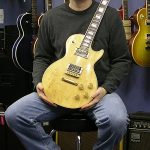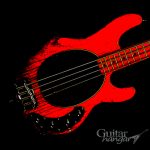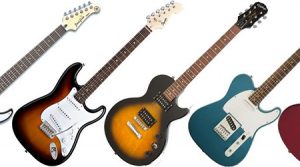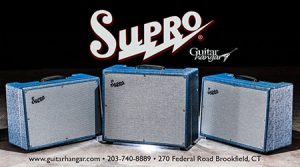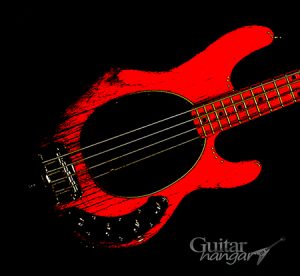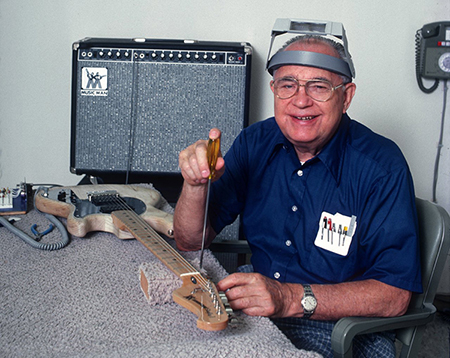
Most people know that Leo Fender was the father of the modern electric guitar, but fewer people know that Leo Fender is also responsible for innovations in guitar amplifiers that shaped the sound of modern music. Fender products are famous for their sound, but their forward-thinking technical innovations are usually taken for granted by modern players. We all know and love the Strat and Tele for their elegant designs, their soulful tone, and their iconic looks, but electric guitars would never be heard if it weren’t for the amps they’re plugged into. Leo Fender pioneered the use of vacuum tubes in guitar amps, which made them capable of louder volumes, and distortion – two of the defining characteristics of Rock and Roll.
Obviously, the name Leo Fender is synonymous with guitars, but educated players know that Leo’s biggest, most important tech innovation was his approach to the guitar amplifier. Before Fender, guitar amps were, for the most part, crappy solid state jobbers with very few tonal options (and very low volume). It used to be, if you wanted a guitar tone that was sometimes glassy and sometimes nasty, well, you’d need to buy two different amps for that! And even if you did have a couple amps on stage with you, you’d have to hope your drummer didn’t play too loud or you might not be heard on stage. Leo had years of experience repairing radios and televisions, and saw the potential contained in those labyrinths of wire and glass tubes. Leo Fender was critical of the flaws in his competitor’s products, and knew he could do better, so he set about creating a guitar amp that utilized the triode vacuum tube, just like the powerful radios of yesteryear.
With the release of the Fender Champ, Fender Bassman, and the iconic Fender Twin Reverb, the sonic palette of the electric guitarist was forever altered. With the vacuum tube technology pioneered by Leo Fender, amps now had a lot more headroom, a lot more volume, a lot more tone. By adding tone and volume controls, push/pull boost, reverb, and vibrato, suddenly guitar players could sculpt and personalize their tone. Pretty basic stuff for 2016, but in the 40’s and 50’s, that was a big deal. A REALLY big deal.
Players all over the world suddenly needed a Fender amp. It was a revolution. In America, the rock and roll revolution of the 50’s had players like Dick Dale, Chuck Berry, and Link Wray pushing their Fender amps to the very edge of tone. Eventually the 50’s rockabilly-infused sound gave way to the 60’s garage rock sound, so Fender continued innovating and introducing new models and features to keep up with the times, like dual-channel. By the time the 60’s rolled around, players all over the world had discovered what Leo Fender and his dedicated followers had known for years: find a way to boost the signal in a tube amp, and you get distortion. And if there’s one thing guitar players love, it’s distortion.
Simply put, if it weren’t for Fender amps, the guitar world (and the world in general) would be a very different place. So the next time you’re listening to a face-melting, high-gain guitar solo, take a moment to thank Leo!
Guitar Hangar 2016
Stay tuned for the next chapter: Leo and the 60’s…

